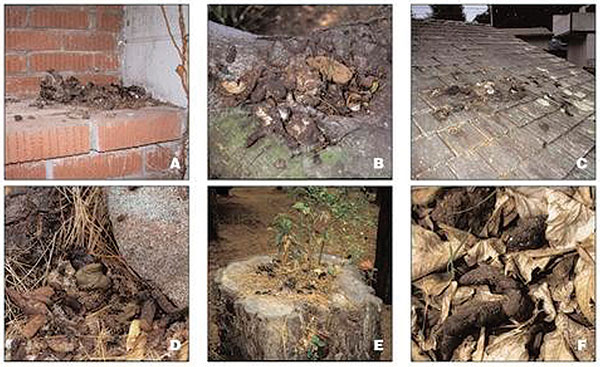Volume 9, Number 12—December 2003
Research
Raccoon Roundworm Eggs near Homes and Risk for Larva Migrans Disease, California Communities
Figure 2

Figure 2. Typical raccoon latrines found in urban/suburban environments. (A) Latrine on a chimney ledge, illustrating the climbing abilities of raccoons and their tenacity in maintaining latrines. (B) Large latrine in the crotch of an oak tree approximately 3.5 m (15 feet) above ground. The sides of the tree were visibly stained with fecal residue that rain had washed down the trunk, contaminating a child’s play area below with Baylisascaris procyonis eggs. (C) Large latrine, in use for years on a house roof, unknown to the home owner. (D) Latrine site on the ground near downed timber and rocks in a suburban yard. Note the variety of fecal materials (including seeds, crustacean shells, and human refuse), reflecting the diversity of the raccoon diet. The homogenous-appearing fresh scat in the center is composed of digested pet food. (E) Latrine on a stump in a suburban park with plants sprouting from seeds in the scat. Granivorous birds and mammals are attracted to such locations, as are curious children. (F) Raccoon scat hidden in leaf litter in a suburban back yard, indicating how occult contamination may be.